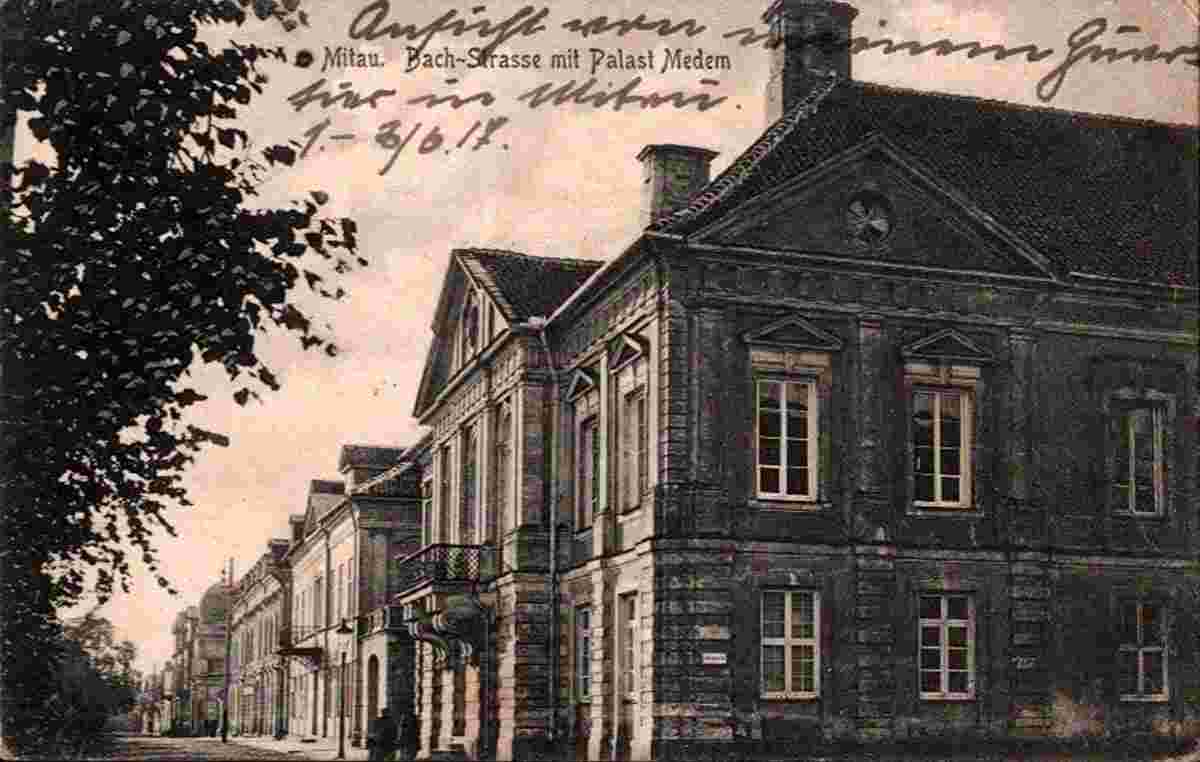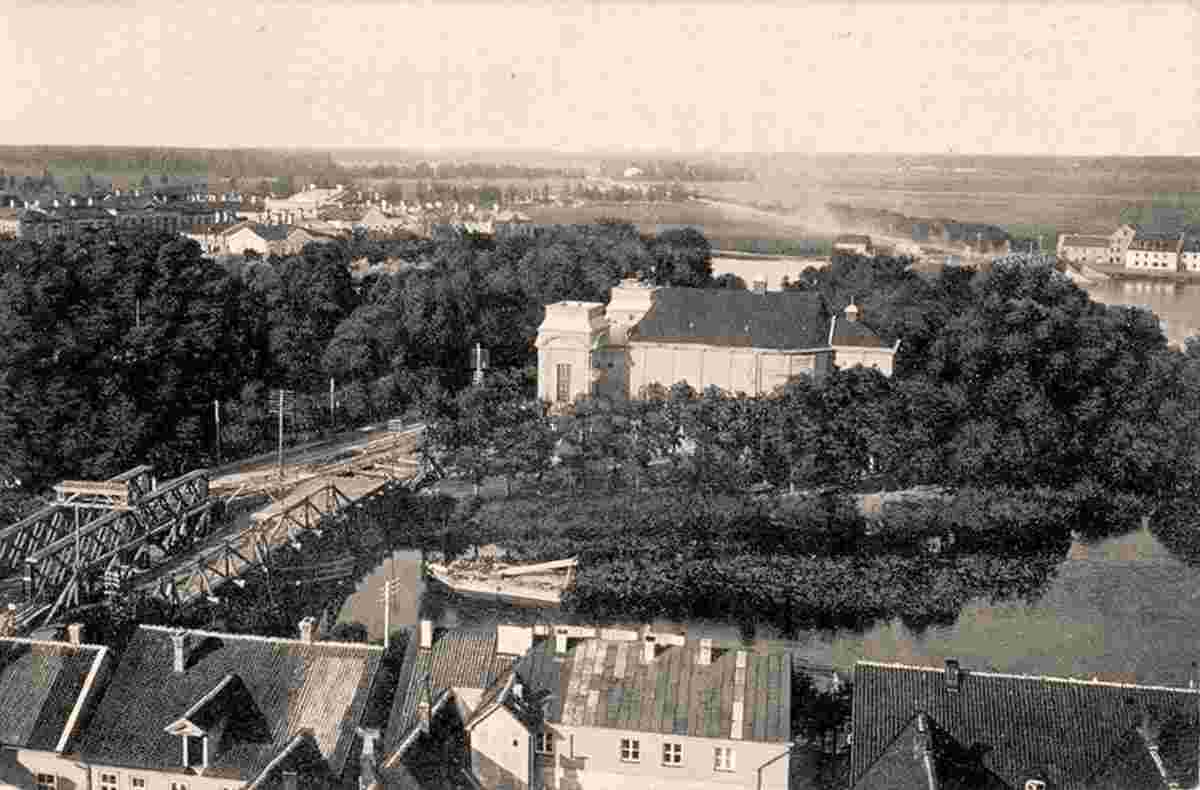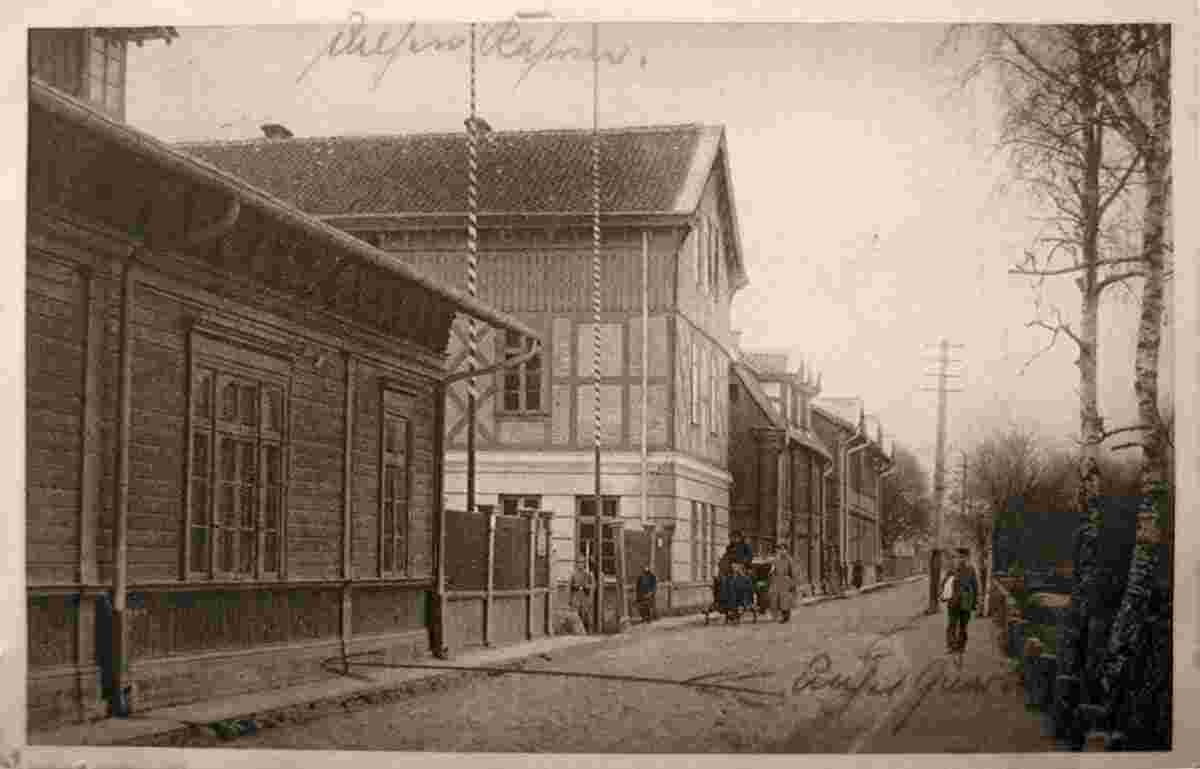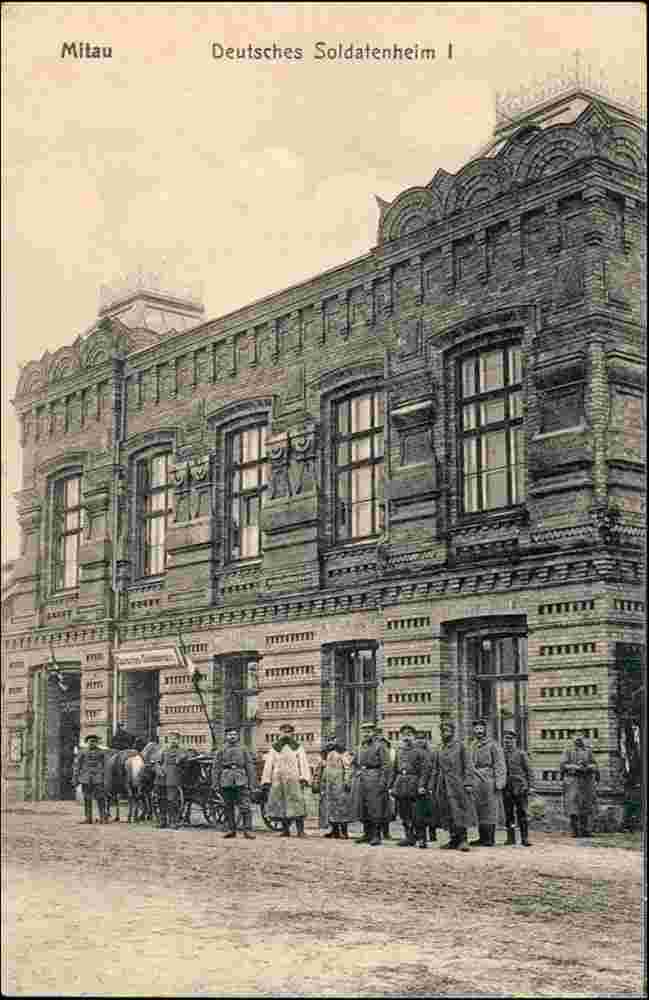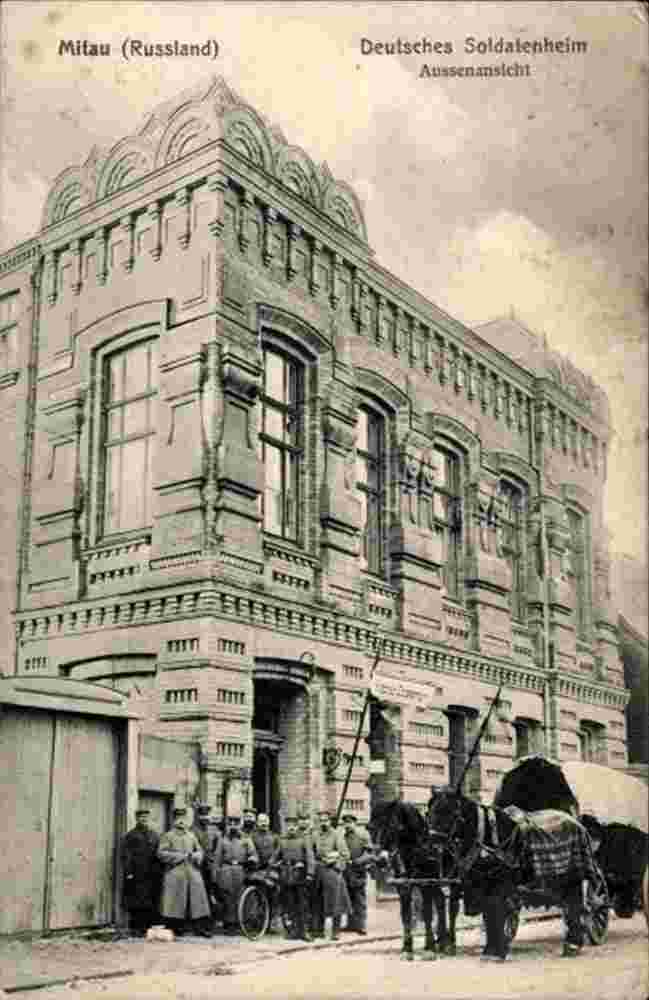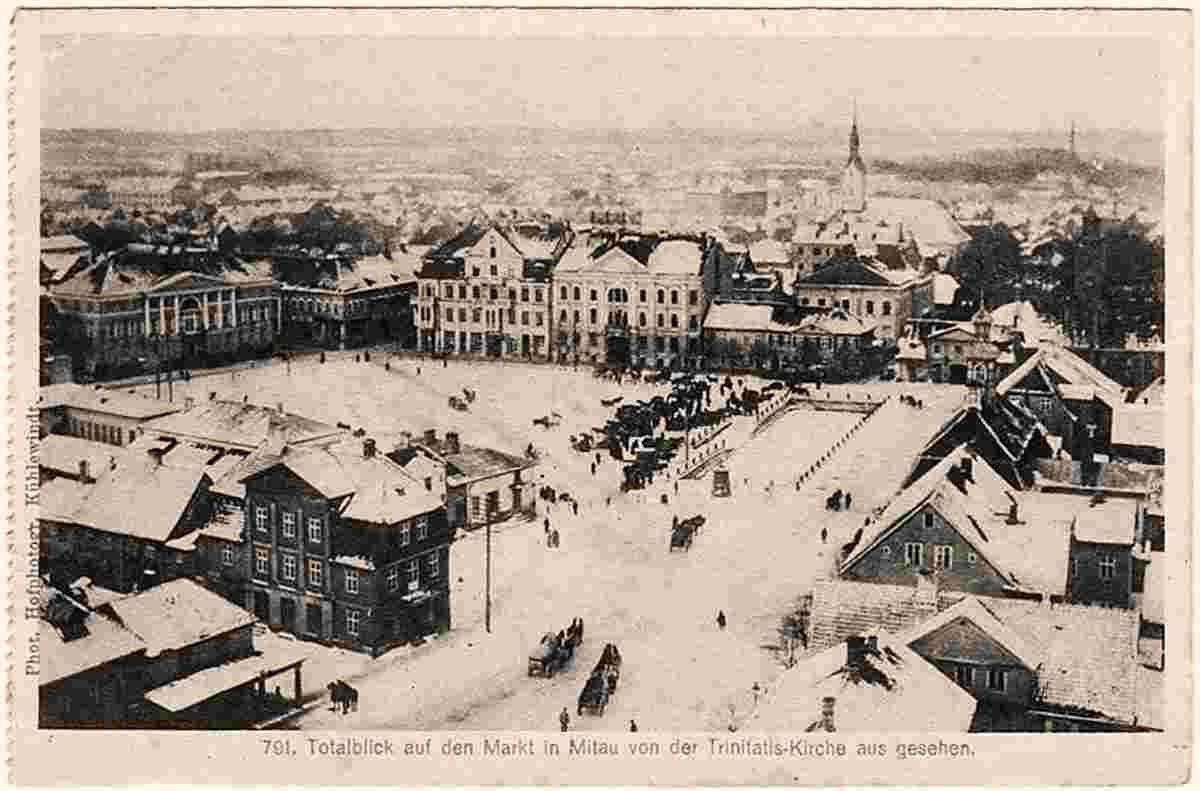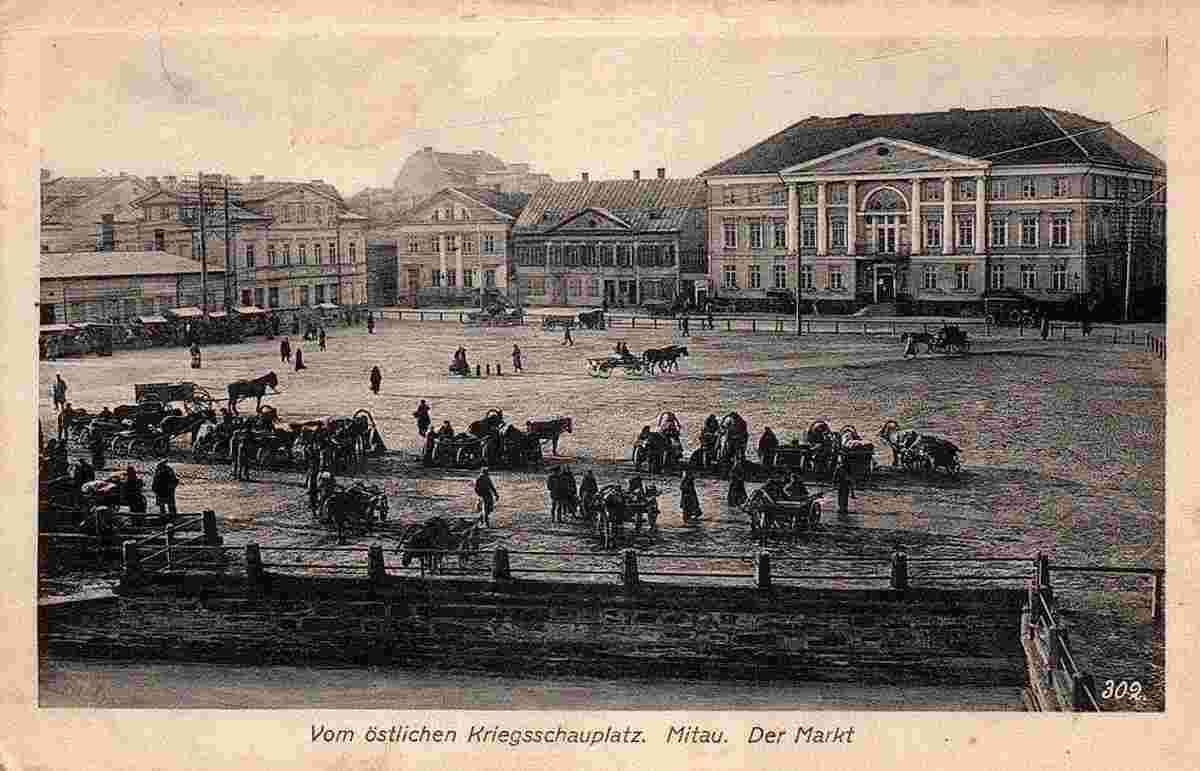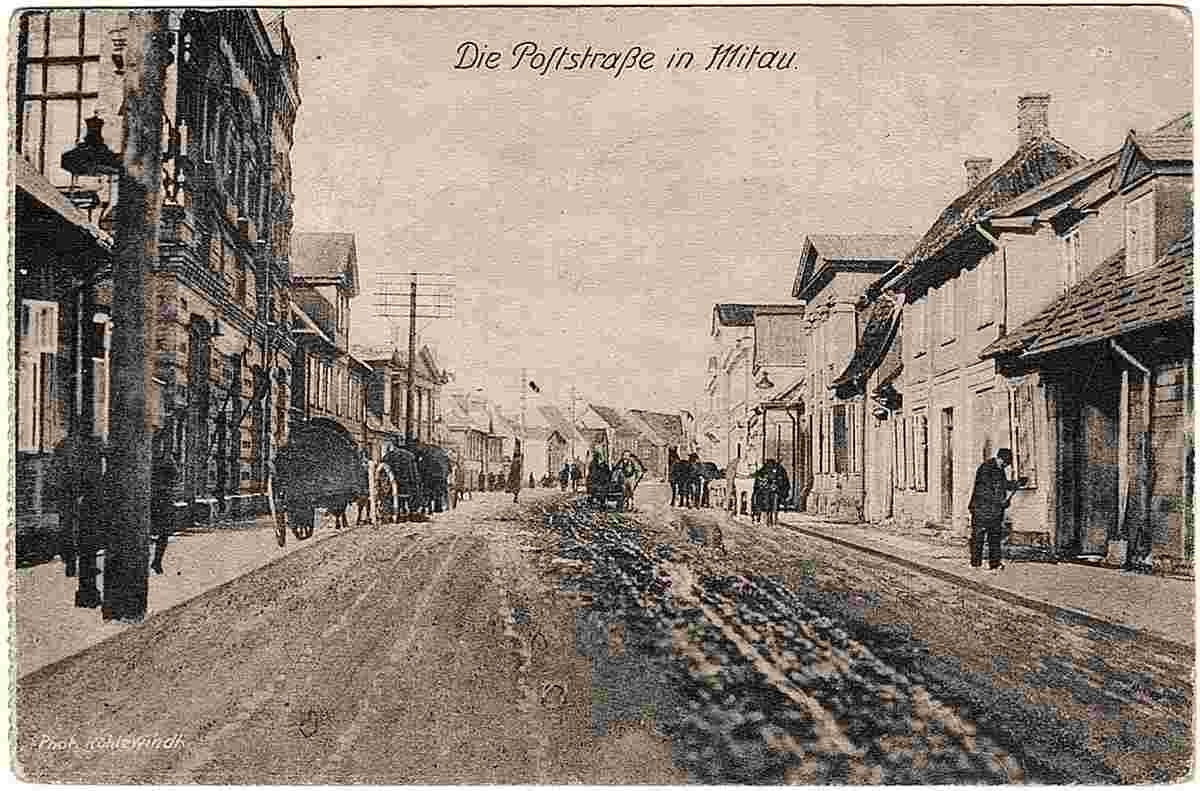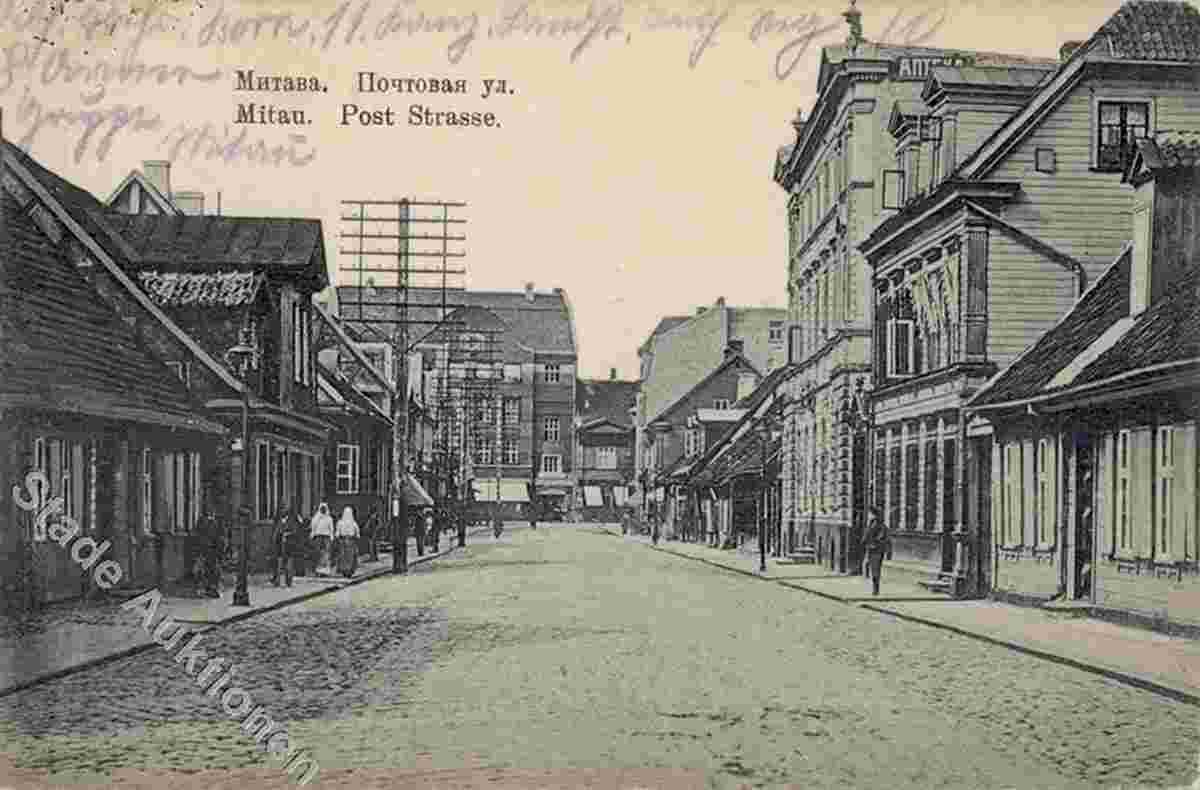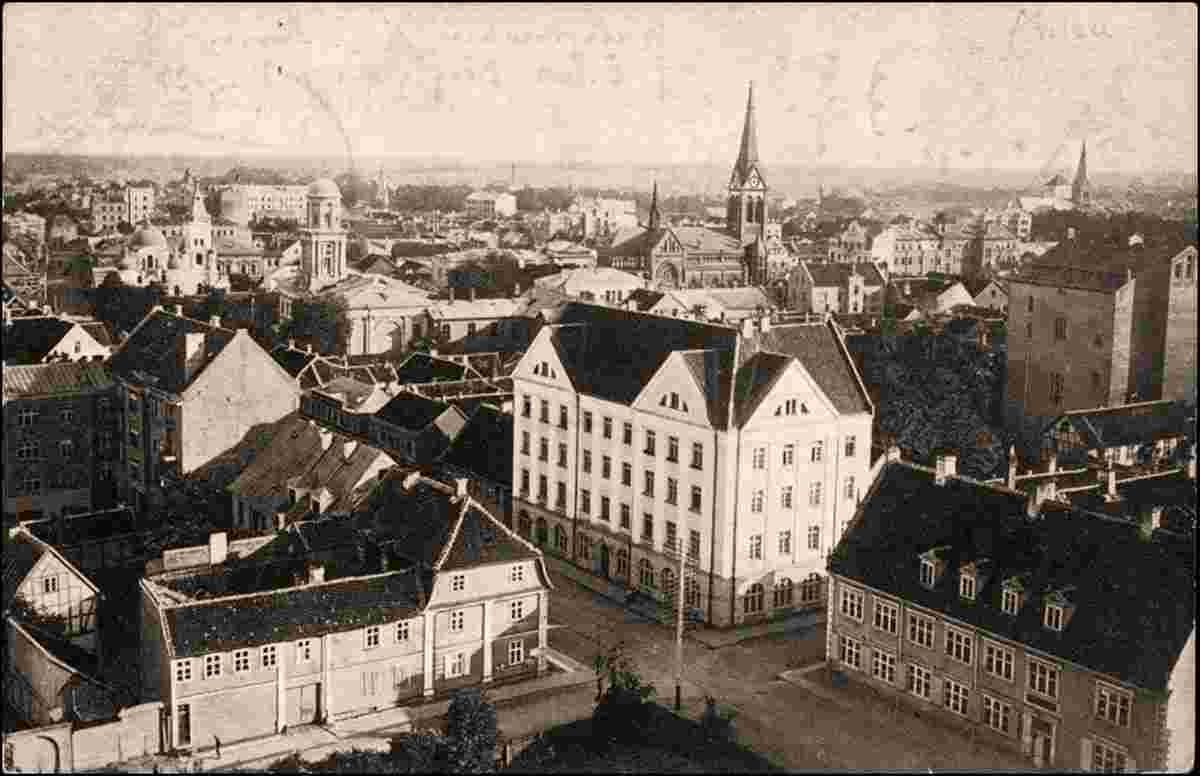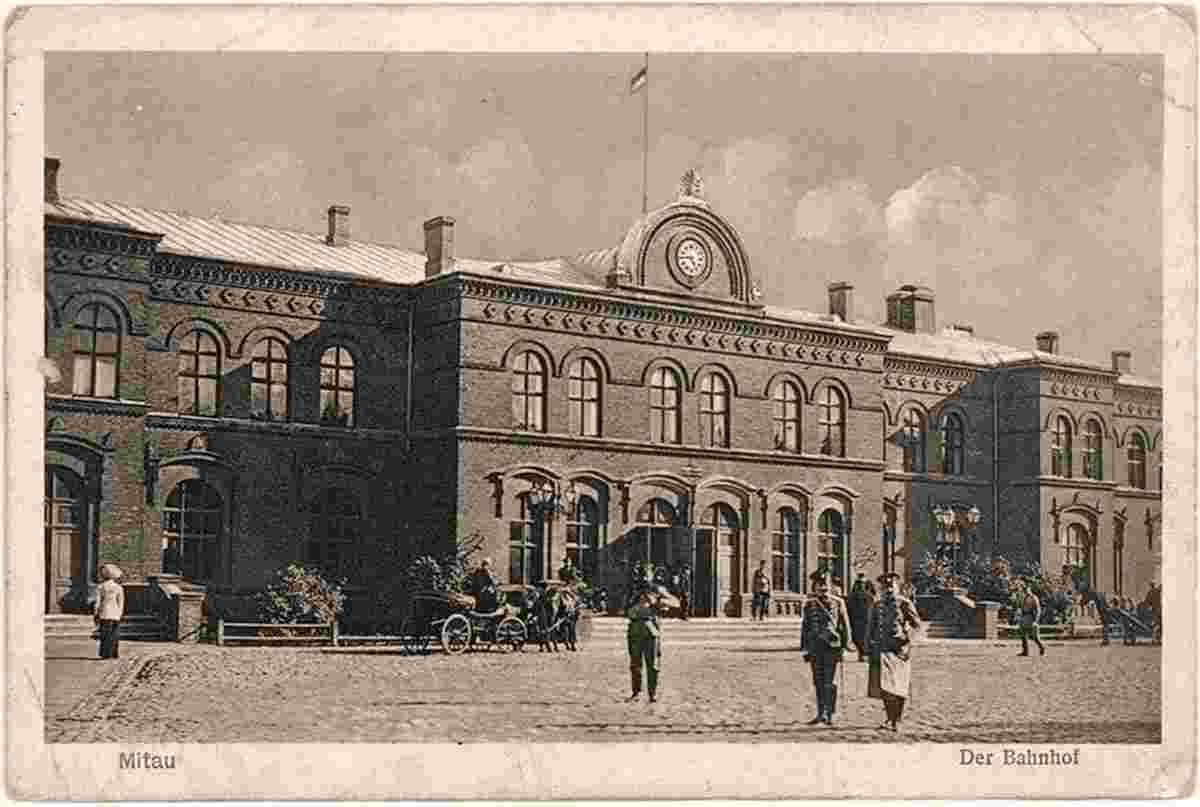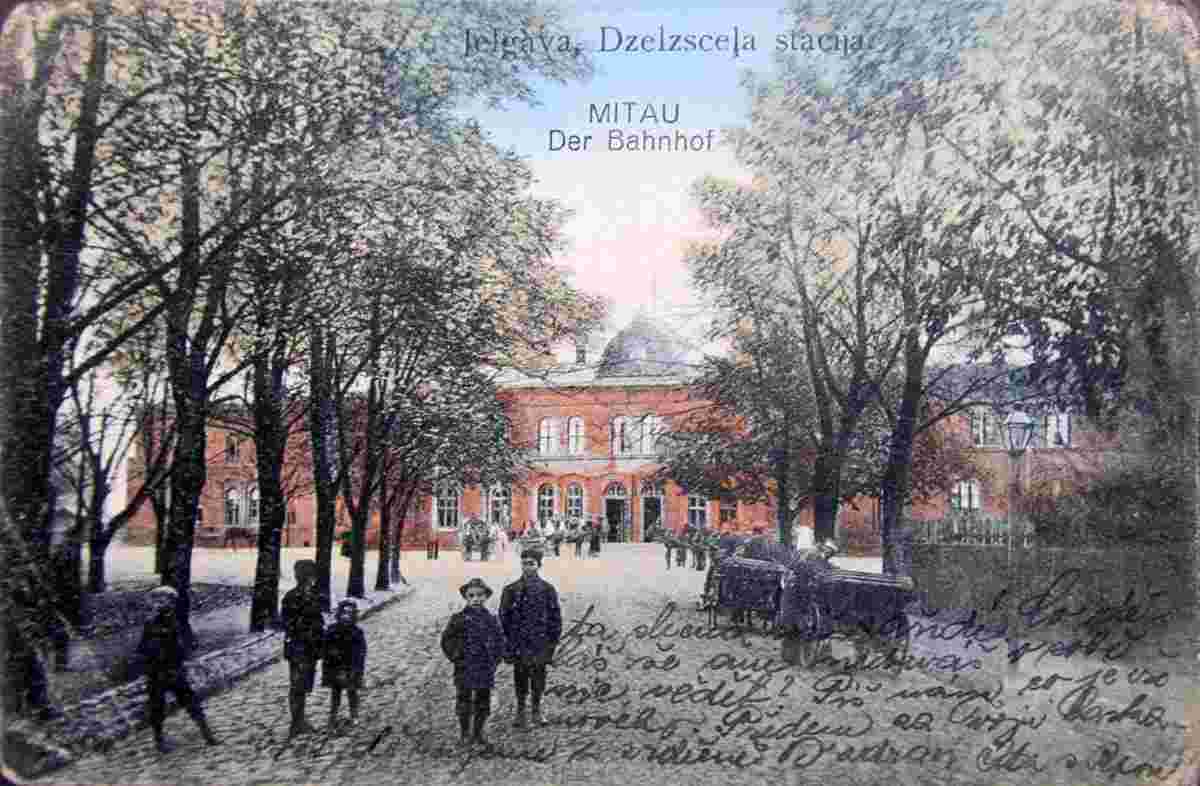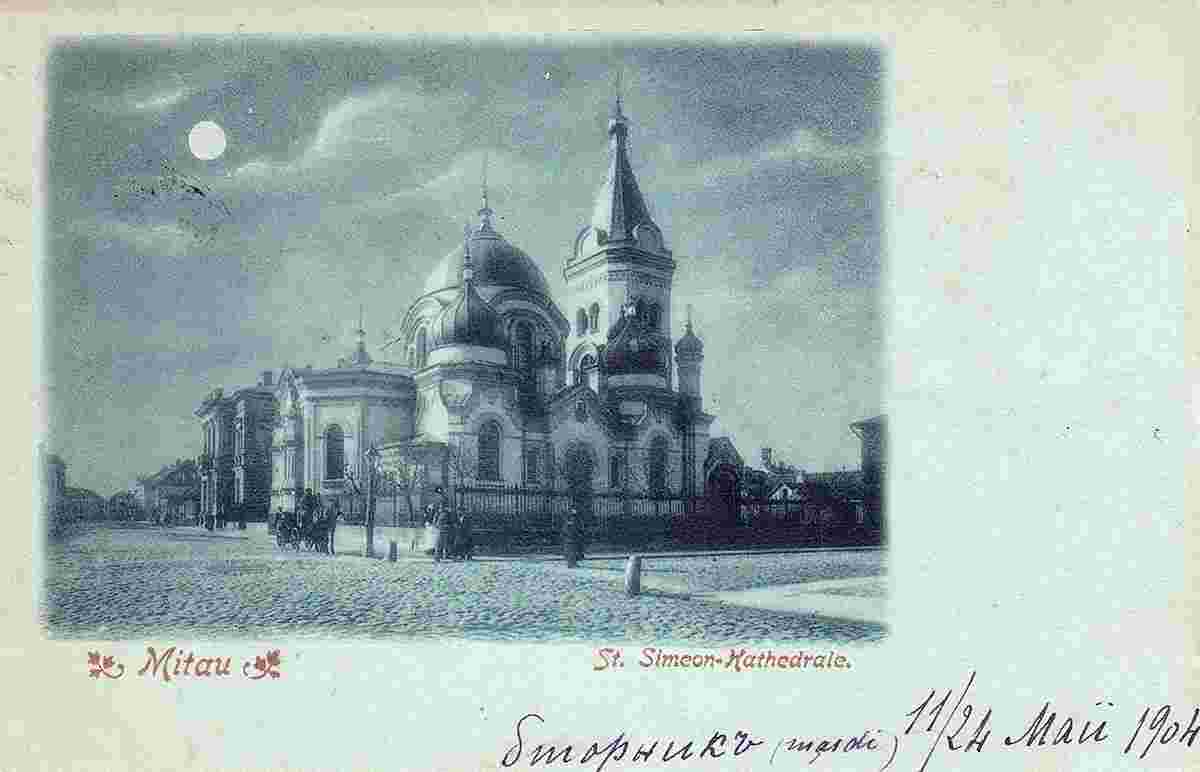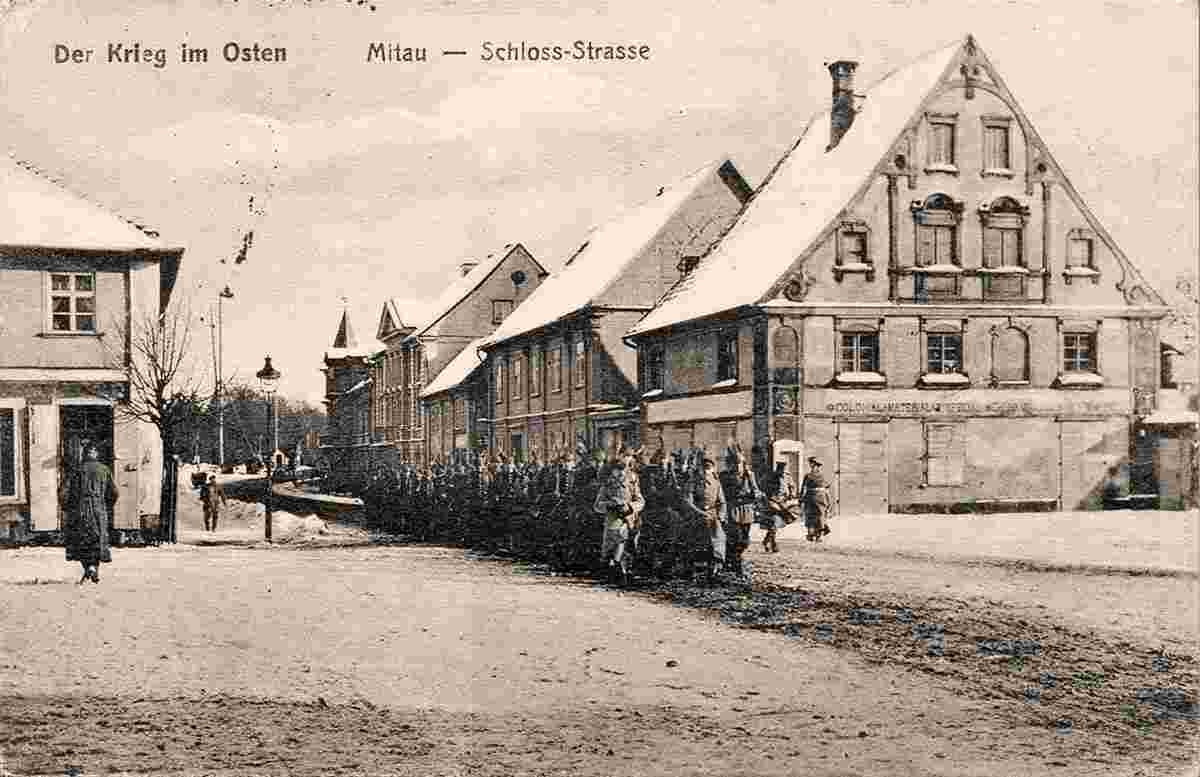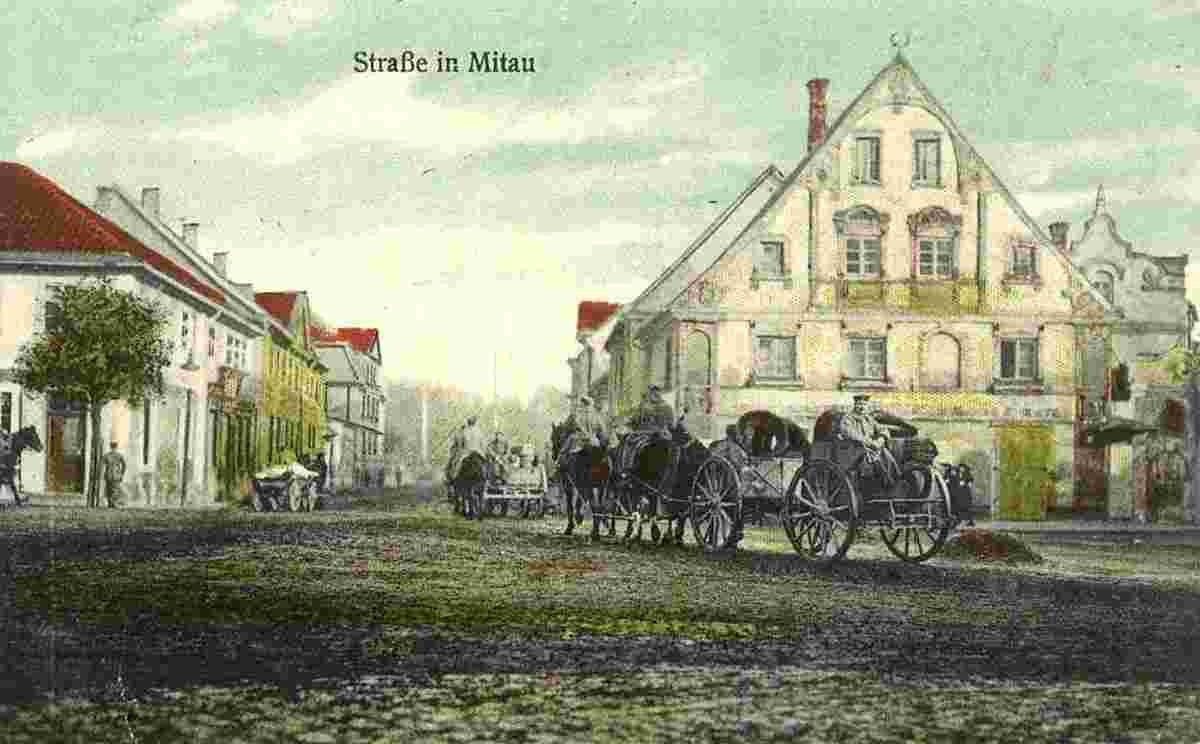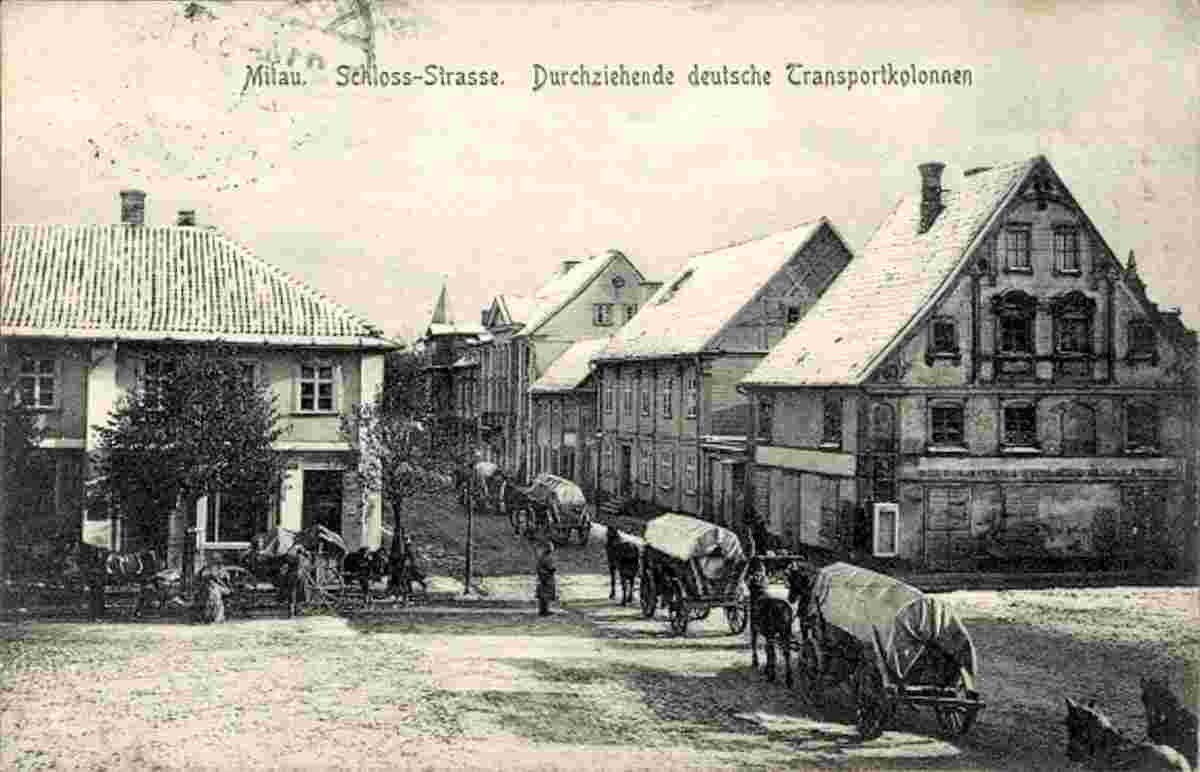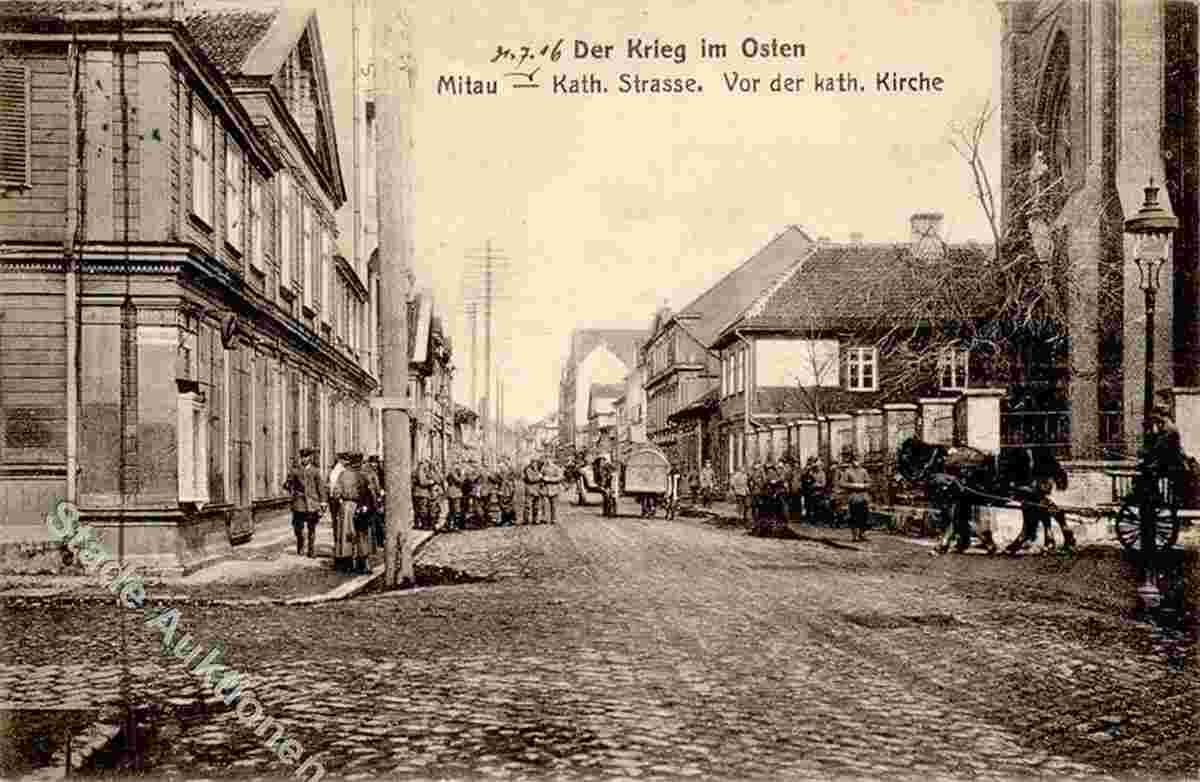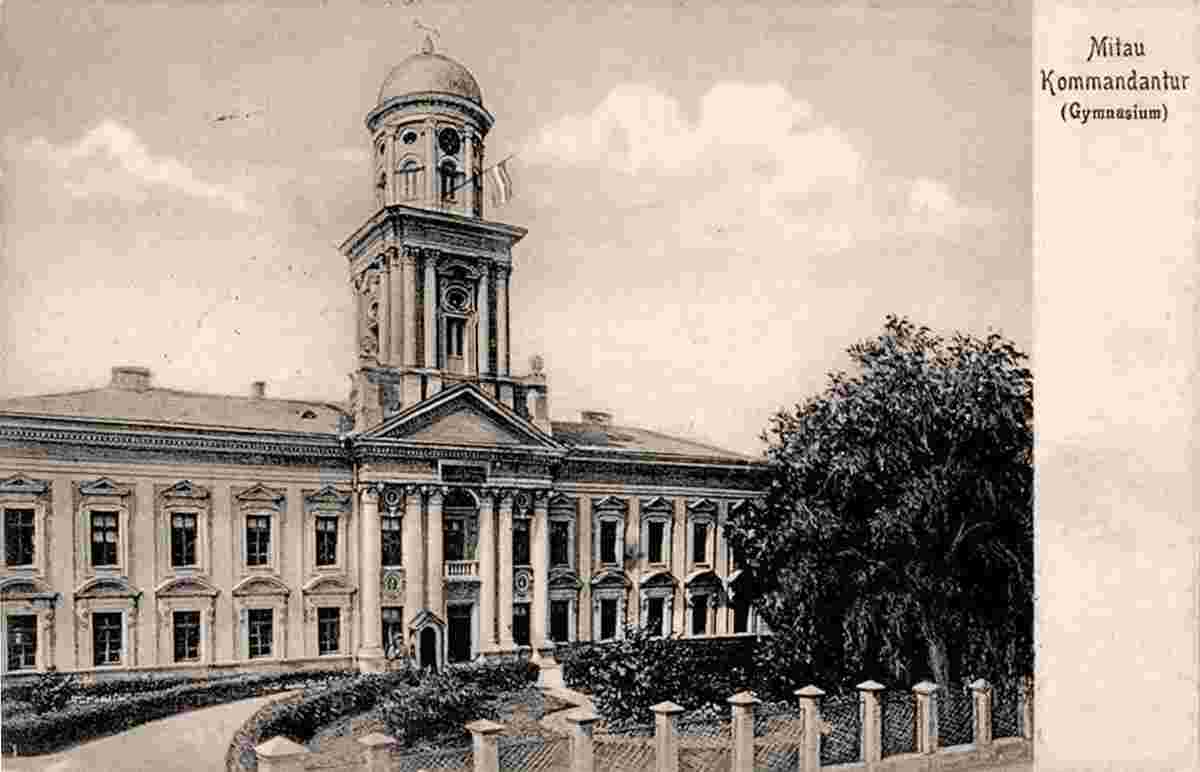Historical and old photos of Jelgava (german - Mitau)
HistoryThe Livonian settlement Jelgava began developing between the rivers Lielupe and Driksa during the 10th century. Led by the Grand Master Konrad von Mander, the crusading Livonian Order constructed the castle in Mitau on a natural island fortification (Pilssala) in 1265–1266. Using Mitau as a southern fortress, the German knights subdued the surrounding Livonians and Semigallians by 1290. The town rose in importance as a defensive fixture against the Lithuanians to the south, who succeeded in plundering Jelgava in 1345. As a result of the fall of the Livonian Order in the Livonian War, Mitau became a town of the Duchy of Courland in 1561. Jelgava received city rights in 1573, and became the capital of the united duchies of Courland and Semigallia in 1578. When the Duchy of Courland split in 1596, Jelgava became the residence of Duke Friedrich Kettler of Semigallia. The city again became the capital of the united duchies in 1617. Because the duchy became a vassal of the Polish-Lithuanian Commonwealth, Jelgava was also referred to by the Polish name Mitawa. The Commonwealth's repeated wars with Sweden subjected Jelgava to several sieges. Despite the wars, the city grew as a center for trade and industry. As Courland's neighbors increased in strength, however, the duchy and Jelgava began to fall under Russia's sphere of influence; Carl Christian Joseph of Saxony, Duke of Courland had to abdicate under Russian siege in 1763. The duchess from 1711 to 1730 was Anna Ivanovna, later Empress Anna I of Russia. The penultimate duke of Courland, Ernst Johann von Biron, expanded the cultural aspects of Jelgava. He constructed the ducal palace and opened the first public library in the city. In 1775 the last Duke of Courland, Peter von Biron, founded the Academia Petrina, which became a cultural center for the country. The duke also encouraged theatrical performances at his court. With the outbreak of the French Revolution in 1789, the citizens of Jelgava clamored for more rights. However, Imperial Russia annexed the city with Courland in 1795 during the Partitions of Poland. As the seat of the Count of Provence, the palace of Jelgava was the residence (1798–1801 and 1804–1807) of Louis XVIII before he became the French king. Although the city was occupied by Prussian troops during the Napoleonic Wars, it was largely spared destruction. Jelgava further expanded after the construction of its railway in 1868. The development of its infrastructure encouraged rural Latvians to migrate to the city, as merchants, craftsmen, teachers, and officials. By 1914 Jelgava had over 45,000 inhabitants. However, Jelgava suffered considerably after the outbreak of World War I. The spirited defence of Jelgava by two battalions of the Latvian Home Guard in 1915, helped inspire the formation of the Latvian Rifles. German troops occupied the city during the war, and British prisoners of war, sent there as forced labour, suffered atrocious conditions and treatment. After the war, in 1919, Jelgava became a battleground between Bolshevik Red Guards, German paramilitaries, and Latvian freedom fighters. After the latter's victory in November of 1919, Jelgava became an important city in independent Latvia. In 1925 a sugar factory was built in Jelgava, the first such factory in Latvia. In 1939 Latvia University of Life Sciences and Technologies was opened in Jelgava Palace. As a result of the Nazi-Soviet Pact, Jelgava was occupied and annexed with the rest of Latvia by the Soviet Union in 1940 during World War II. Much of the city's remaining German population were resettled into the territory of German occupied Poland during the Nazi–Soviet population transfers. German forces from Army Group North occupied Jelgava from 1941 to 1944 until the capture of the city by the Red Army. During the war, German police along with Latvian auxiliary police murdered the Jewish inhabitants of the city during a series of mass shootings (see Jelgava massacres). The main synagogue was burned to the ground. In late July 1944, the Soviet Red army launched an attack from the south in the direction of Jelgava and Tukums to encircle the German Army Group North. Jelgava was declared a fortress (Festung) however, there were only a few scattered German and Latvian units in the city. From the 30 July until the 7 August, after heavy street fighting and several air raids, the Red Army managed to occupy the left bank of the Lielupe river. In late August, the German army launched a counterattack on Jelgava from the north but it failed to drive back the Soviets. Jelgava remained on the frontline until the 10 October when the German army retreated to Courland. The city's historic centre, industry, rail network, and public buildings were heavily damaged by the fighting, with almost 90% of the city destroyed. Jelgava was rebuilt in typical Soviet style after World War II as part of the Latvian SSR. Jelgava became home to several big factories. Among them were the sugar factory, which was heavily expanded from 1975 assembly line, and administration buildings for the Riga Autobus Factory (RAF). Following Latvian independence, Jelgava has slowly regained its original Germanic heritage and is now a popular tourist site. Owing to Latvia University of Life Sciences and Technologies, many of Jelgava's inhabitants are students or people connected with education. For this reason Jelgava is sometimes called the Student capital of Latvia. Origin: en.wikipedia.org | ||||||||||||||||||||
 |
Historical and old photos of Jelgava (german - Mitau)
Jelgavas vēsturiskās un senās fotogrāfijas (vāciski - Mitau) |
| Main page • Countries of Europa • Cities of Latvia |
| Robinson Rd, CB 13862 Nassau, NP, The Bahamas |
